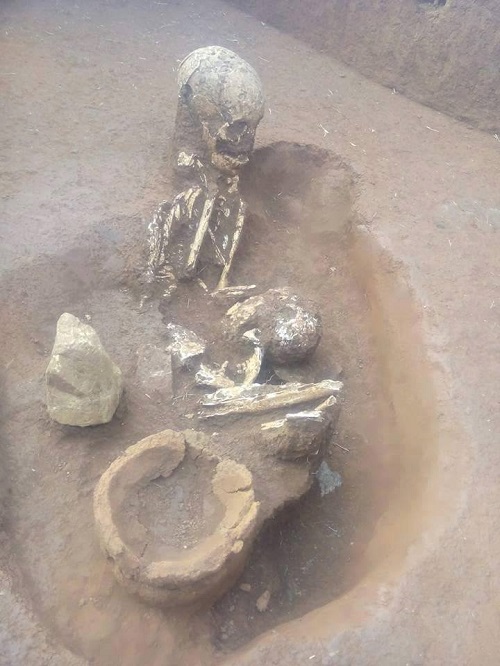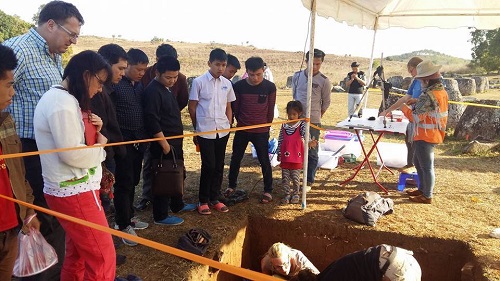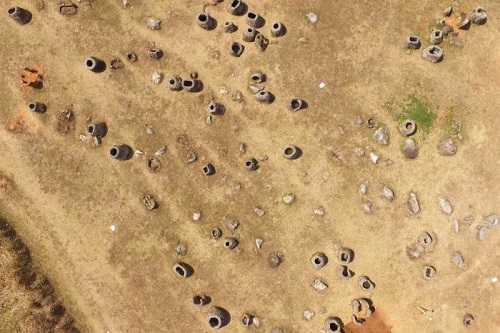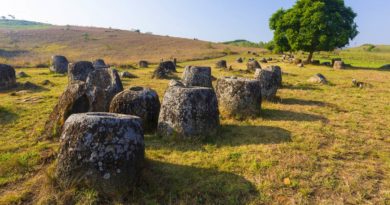Ancient Human Remains, Artefacts Unearthed At Plain Of Jars
Source: Vientiane Times
Excavations by Lao and Australian archaeologists at the Plain of Jars Site 1 in Paek district, Xieng Khuang province, have uncovered three human remains and some artefacts dating back 2,500-3,000 years.
Two human remains were found together at Jar Site 1 some 70cm underground while the third was discovered 13 metres away.
This was the third collaborative excavation by the team of archaeologists from the Archaeology Division of the Ministry of Information, Culture and Tourism’s Department of National Heritage, and the Australian National University.
The team has also worked with provincial and district information, culture and tourism sectors to examine the remains and artefacts since they first visited the site, where they worked from February 7-29, according to a senior ministry official.
Archaeology Division Director Dr Thonglith Luangkhoth told Vientiane Times yesterday that the remains and artefacts were located about 8km from the centre of Phonsavanh district, and were now being kept safe in the provincial museum.
“This discovery marks a significant milestone since archaeological excavations began in the area in 1930 in collaboration with a French archaeologist,” he said.
Dr Thonglith explained that some human remains and artefacts including tools and large stone vessels were initially uncovered. Then in 1995-1996 Lao and Japanese archaeologists unearthed more remains along with ancient relics including household items.
Dr Thonglith said the human remains and items were being kept at the Xieng Khuang provincial museum, adding “The discovery of these human remains and artefacts is an important part of studying and researching the history of the Plain of Jars.”
He said the division planned to work with archaeologists from the provincial Information, Culture and Tourism Department and the Australian National University next year, adding “We will continue to search for other human remains and identify potential relics of interest in other areas.”
Dr Thonglith said the human remains would eventually be put on public display following further investigation of some small samples by the Australian National University’s lab.
There has long been public interest in the history of the Plain of Jars and the origins of the stone vessels but mystery still surrounds them. While some believe the jars were built to store human remains others theorise they were used to boil liquid during the Khoun Cheuang period.
Jar Site 1 or (Thong Hai Hin 1) is the more popular of the two sites in Xieng Khuang province, located 8 km southwest of Phonsavanh and easily reached by tuk-tuk or bike.
The site counts 331 jars, including the largest single jar – said to have been the victory cup of Khoun Cheuang.
According to local legend, Khoun Cheuang (6th century AD) fought a long battle against his enemies and liberated the local people from oppressive rulers.
The jars were supposedly made to brew and store huge amounts of rice alcohol which were drunk during the seven-month long celebration held in honour of the victory.





